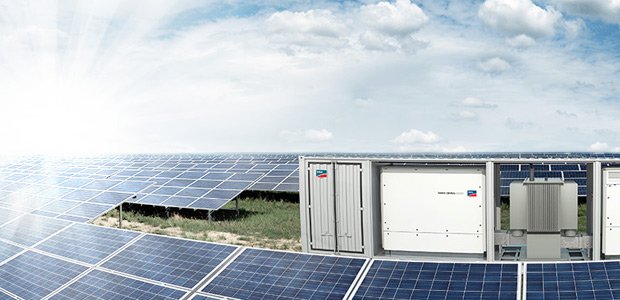Digitization of the Energy World: 5 Ideas on the Evolving Importance of Photovoltaics

The energy industry is facing significant upheaval—digitization will result in completely new business models. What role will photovoltaics play in this?
1. Digitization has turned the energy market on its head
Following pioneering technological work, a large portion of electric current is now generated cost-efficiently using renewable energy. The next phase is to transform it into a service, making it an everyday commodity.
Even today, it is clear that the low costs of photovoltaics and the digitization of the energy industry mean that traditional business models are losing their significance. Market structures are changing enormously and extremely quickly thanks to new market players such as Google and Apple.
The previous conventional pipeline business is being replaced by entirely new platforms used for direct trading between producers and consumers. In turn, bypassing stages of the value chain means lower profit margins and thus lower electricity costs.
The energy market has been turned on its head, which can rightly be called a disruptive innovation. It is digitization that makes a completely new product out of electricity and calls for a radical rethink on the part of all those involved in the energy sector.
2. Consumers are becoming prosumers
The energy transition 2.0 is characterized by the breathtaking speed at which it’s happening. Nothing can be taken for granted any more. Electricity is no longer an exclusive commodity, but freely available. In the years to come, it will be almost exclusively a matter of making the right offer to “prosumers” — in other words, people who both produce and consume energy — and providing them with a service that suits their lifestyles. This is the business model of the future.
3. Reducing complexity for the user
Everyday life shows that digitization is finding its way into the home and is unstoppable. The challenge is to connect technology and make it as user-friendly as possible. Take the topic of smart homes—today it is already possible to connect, in the background and fully automatically, various components such as PV systems, home appliances, heat pumps, electric cars and storage systems via a common communication standard, and to control them on the basis of weather forecasts and user behavior using an intelligent energy manager. The user can monitor the system easily through a smartphone app. While the user interface is becoming simpler for the end consumer to use, the systems in the background are becoming more and more complex. This task can only be accomplished with experience, expertise, and the right partnerships, by paving the way instead of copying.
4. Photovoltaics is becoming an important interface in the networked energy world
New business models are based on the network effect of specialists. As a specialist in PV applications, SMA is an important point of contact in this new world. It is for this very reason that we are entering into strategic partnerships. SMA has been working for some time with major manufacturers such as Bosch, Stiebel Eltron, Vaillant and Miele on harmonizing interfaces with appliances and climate-control technology. However, this is nowhere near enough. In fact, the opportunity for companies lies in systematically recording generation and consumption data of photovoltaics.
Solar power can then gain higher value, as it is easily forecasted. For example, grid operators could make better investment decisions if they had more accurate information concerning electricity supply and demand at their disposal. Banks could optimize their financing models if they automatically received information about the technical availability of PV systems. We are taking an important step in this direction with our new offer, “SMA Energy Services.” We provide high-resolution data for reliable forecasts and up-to-date solar power projections, in compliance, of course, with the highest security and data privacy standards.
Solar inverters are the core of integrated, sophisticated systems. Therefore, they are regarded as safety relevant control systems because monitoring technology could be built in PV system technology. To exclude such manipulations from the very start, transparent company structures, equipment with high security standards as well as an IT server infrastructure located in countries with high security standards are paramount for a successful transition to a platform business model.
5. E-mobility and storage systems are becoming drivers of the energy transition
E-mobility and the use of storage systems will no doubt lead to new approaches in doing business in the energy industry. Consequently, SMA is working very closely with U.S. and European automotive corporations as well as leading battery manufacturers. Similar to the FinTechs in the financial sector, various start-ups are developing in the energy sector, which are driving the digitization of the energy transition. The collaboration of companies in the fields of e-mobility, renewable energy sources and start-ups can develop the capability the digital and decentralized energy transition needs to succeed.
We look forward to making an important contribution and becoming a key component of the new energy market with our PV system technology.

great information given in the post